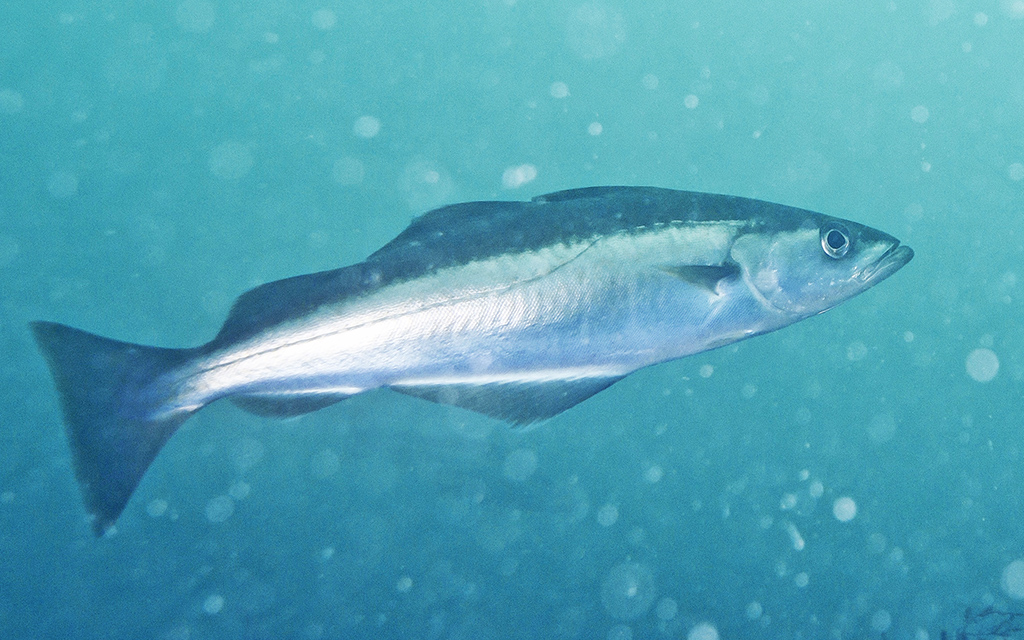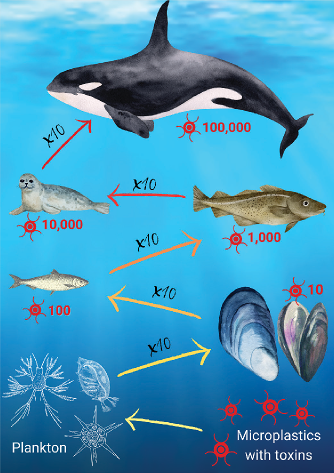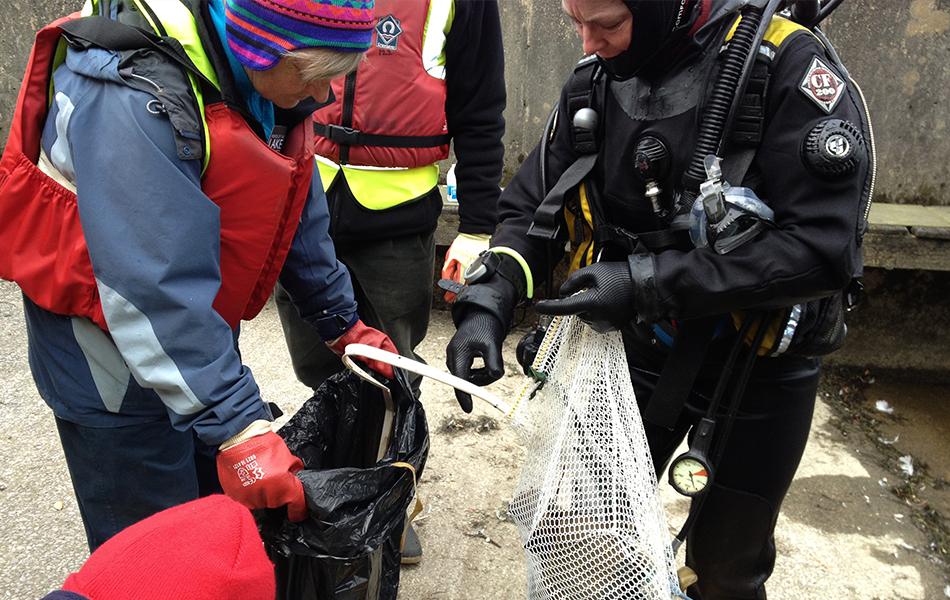
Kerry MacKay takes a deep dive into the food chain, and how our lethal dependence on plastic has affected the environment on a molecular level
To me, diving and a fish supper are synonymous with a successful club trip, but at the same time, BSAC’s surveys show that members are concerned about overfishing. To that end, this month I’m considering how we divers can have our fish, and eat them too.
The Marine Conservation Society have a Good Fish Guide in which you can check how sustainable different types of fish are to eat.
Sadly most chippy staff don’t know where the fish was sourced from, but we can at least ask; then retailers will get the message that customers want to know.
Back to the title then. Is there really plastic in your fish supper? Before I go and scare you too much, I would like to say that I myself still enjoy the occasional bit of seafood. In fact, it’s still recommended to eat two portions of seafood per week for a healthy, balanced diet.
A review study found that 60% of fish investigated globally contain microplastics
Scarily though, plastic is indeed found in the fish we eat. A review study found that 60% of fish investigated globally contain microplastics. More disturbingly, microplastics are found in the parts of the fish we actually eat!
Plastic isn’t the only thing we should be concerned about. Plastic particles act like tiny magnets, attracting all sorts of other nasty chemicals in the environment. This process is called ‘adsorption’; it means that almost every particle of plastic consumed by a sea creature comes with a bonus dose of toxins.
 These chemicals come in many forms, with some of the more notorious being mercury, PCBs (banned toxic chemicals) and DDT (a toxic insecticide and organic pollutant, long banned but still present in soils and rivers). Let’s not forget the chemicals in the plastic itself, which leach out chemicals such as BPA, an industrial chemical used in plastic manufacturing, linked to a number of health issues.
These chemicals come in many forms, with some of the more notorious being mercury, PCBs (banned toxic chemicals) and DDT (a toxic insecticide and organic pollutant, long banned but still present in soils and rivers). Let’s not forget the chemicals in the plastic itself, which leach out chemicals such as BPA, an industrial chemical used in plastic manufacturing, linked to a number of health issues.
Some species are safer than others – it’s all to do with what they eat. Imagine a shellfish filter feeding and consuming a piece of plastic with a little bit of toxin adsorbed to it. A hungry predator comes along and eats 10 of those shellfish. This predator now has 10x the dose of toxins. Then a bigger fish comes along and eats 10 of those, now it’s 100 times the dose… and so on up the food chain.
While each microplastic particle carries only a tiny dose of toxin, over time these doses add up. This build-up is called bioaccumulation. Carnivorous fish near the top of the food chain (such as tuna), have more microplastics and toxins than many other fish.
Guess who’s considered top of the food chain in many cases? Yup, that’s right, humans. I hate to break it to you, but your fish supper does indeed come packed with bonus nasties.
Let’s take a slightly less personal case study. Meet Lulu the Orca. Lulu lived as part of the only resident pod of Orca here on the west coast of Scotland. She was at least 20 years old when she got tangled in fishing ropes and drowned. She was found washed up on Tiree in 2016.
Terrible as that is, here’s the really scary part. Scientists took the opportunity to study Lulu. They found PCB chemical levels in Lulu over 100 times the level at which they start having serious health implications!
It is assumed the whole pod is suffering from similar PCB levels. Infertility is a known effect of PCBs and this is thought to be the reason they have been unsuccessful in having a calf. The pod is now down to less than ten individuals.
PCBs, you’ll be glad to hear, are now banned. However, their legacy still haunts our oceans. I find it scarier that new chemicals are being released every day into our seas and we usually have no idea how harmful they are.
To put things into perspective, you consume more microplastics in bottled water than from your fish supper. But choose your fish wisely. You can pay Lulu a visit at the Natural History Museum in Edinburgh, where her skull is on display.
Article ‘Plastic in your fish supper? by Kerry MacKay first published in SCUBA magazine, Issue 141 March 2024.

 Author: Kerry MacKay | Posted 12 Apr 2024
Author: Kerry MacKay | Posted 12 Apr 2024



